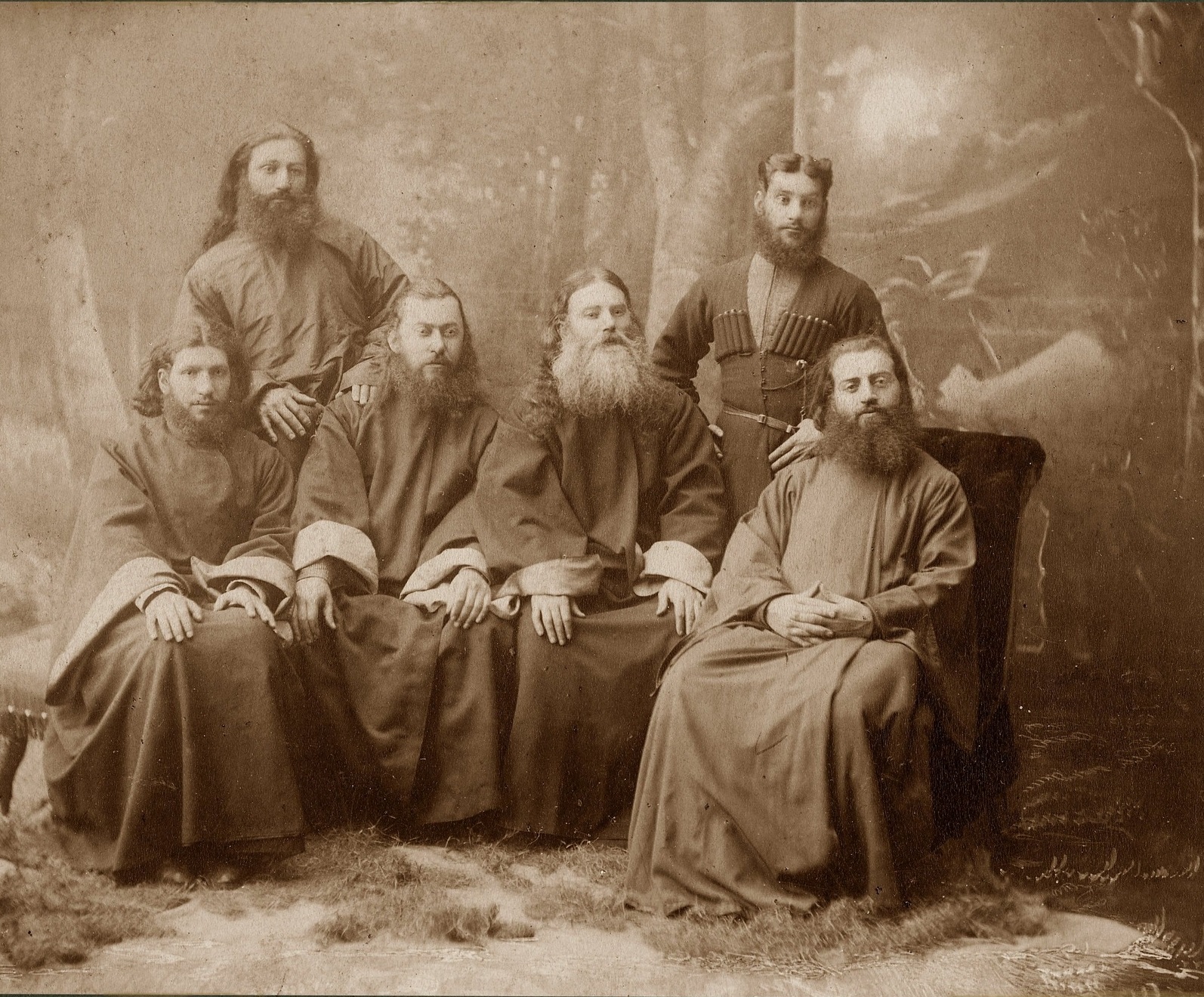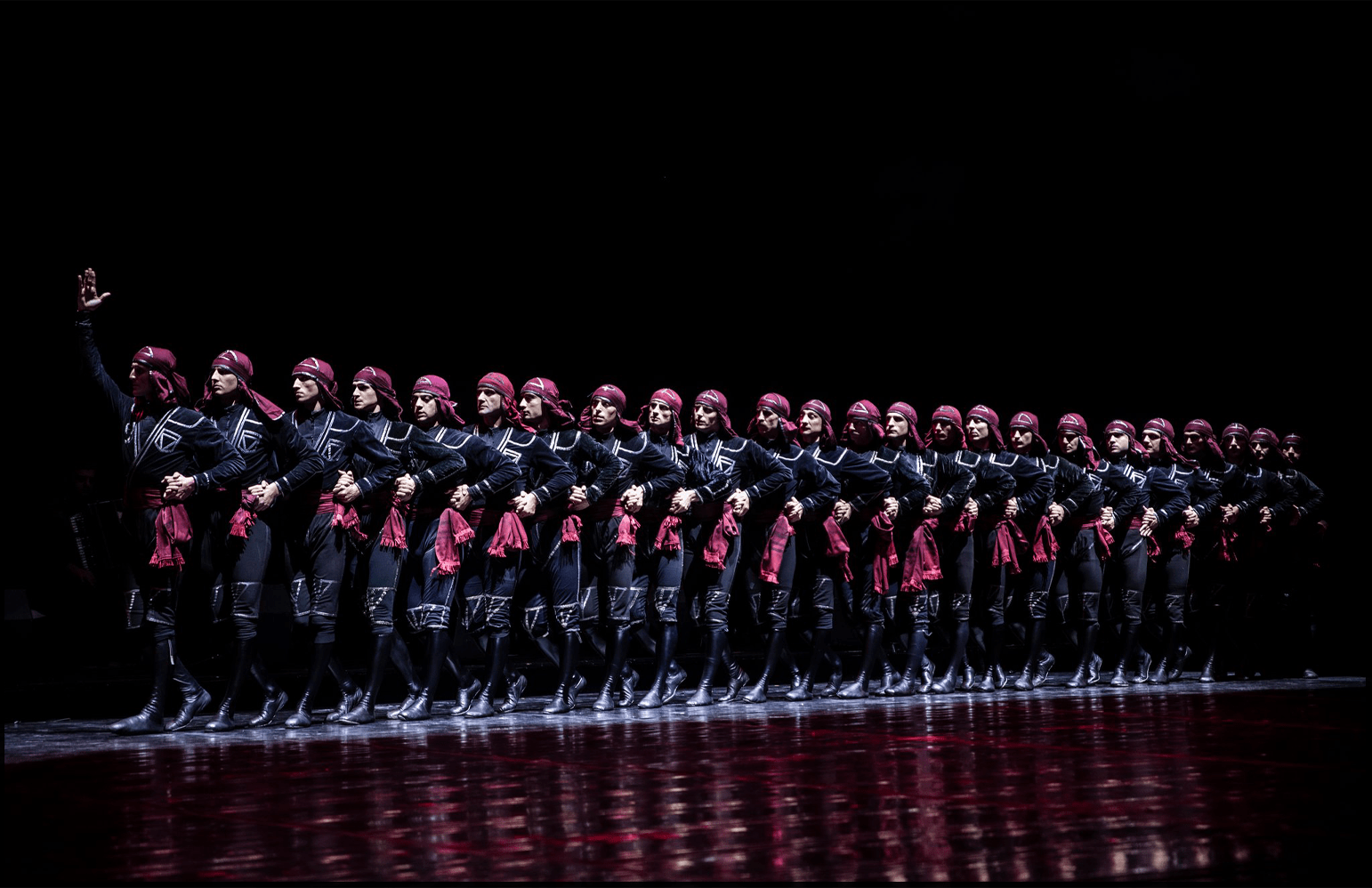Simona Kuti: Transmitter of Chants at the School of St. George’s Church in Khoni
Simona Kuti: Transmitter of Chants at the School of St. George’s Church in Khoni
In Georgia, there have always been educational institutions located near churches and monasteries, which provided comprehensive or general education to talented and interested young people. The following monastic schools are particularly noteworthy: Gelati, Mots’ameta, Katskha, Ch’elishi, Svet’itskhoveli, and Shiomghvimi.
In the district of Khoni in Kvemo (Lower) Imereti, there was once a school near St. George’s Church, which for centuries was one of the important cultural centers in the entire plain of Imereti.
It is unknown exactly when the school came into existence, though there are reports that, in the seventeenth and eighteenth centuries, a number of notable figures in the Church were brought up there.
around 1814, the school was headed by Simon Pirtskhalava, an accomplished chanter who became famous as a transmitter of Georgian church hymns and who was also known as Simona Kuti.
In the Georgian dictionary compiled in the seventeenth and eighteenth centuries by Sulkhan-Saba Orbeliani, , k’t’i is given the gloss sapqari, “disabled,” or more specifically, “with damaged legs.” Simona, apparently, had a physical disability, unable to move independently due to the underdevelopment of his lower limbs.
It is notable that this physical impairment, even at a time when there was little support for people with disabilities, did not prevent him from leading the school. His mental acuity and thorough knowledge of different subjects must have made things easier.
Simona was originally from the Khoni district, namely from the village of Matkhoji. According to various sources (one of them is the Kutaisi Central Archives), he must have been born in 1783.. He grew up and lived in a special building next to the church, in which the orphanage, where children with physical disabilities were placed, was located.[1]
Simona thanked Archbishop Anton Chijavadze for his upbringing: “I was brought up from my youth under the patronage of the blessed Archbishop Anton; I was given the highest grace to learn the Holy Scriptures, as well as writing and chanting.”[2]
Simona was transferred from the orphanage to the church school, where he made a name for himself with good studies and outstanding discipline.
St. George’s school in Khoni functioned as a theological seminary and offered the following subjects: Holy Scripture, which combined reading and writing, theology, and grammar; mathematics; calligraphy; and chanting and secular singing, which were considered the main subjects.
According to our sources, Simona was proficient in all subjects, although he was especially skilled in church chanting. According to the 1878 issue of the journal Iveria, “This singer taught many to chant, reminded many of the forgotten chants, and even now there are many priests and chanters in Imereti who learned from him.”[3]
During Simona's time, St. George's Church was renowned for its beautiful liturgy and chanting tradition. During vespers and matins, chanting would be heard almost constantly: they would read the scripture no more than twice, though the melodious reading of the text was also reportedly wonderful to hear.[4] The service involved a k’ananarkhi (also k’ananakhi or k’anonarki, from the Greek for “one who leads the canon”)), who directed the choir of singers and readers. Simona probably had the function of a kananarkhi.
Among Simona Kuti's disciples were many prominent public and ecclesiastical figures. Among these, Ivliane Tsereteli and Aristovle (Aristo) Kutateladze stand out. Their fathers, the famous singing masters Bezhan Tsereteli and Vasil Kutateladze, were Simona's disciples. Simona’s knowledge and pedagogical prowess can be seen in the examples of these two men.
Ivliane Tsereteli was among those singers whose chanting was recorded by Pilimon Koridze and transcribed in sheet music. Ivliane was considered one of the best singers of his time and knew the chants for the entire calendar year, both in their simplest presentation (sada k’ilo) and in “embellished” form. For this reason he was chosen as the transmitter of chants by the Chanting Restoration Committee in 1884.
In this clip, you can hear one of the chants (“Shobis shesvladi”) transcribed from Ivliane Tsereteli, Razhden Khundadze, and Dimitri Chalaganidze, performed by the Anchiskhati Choir:
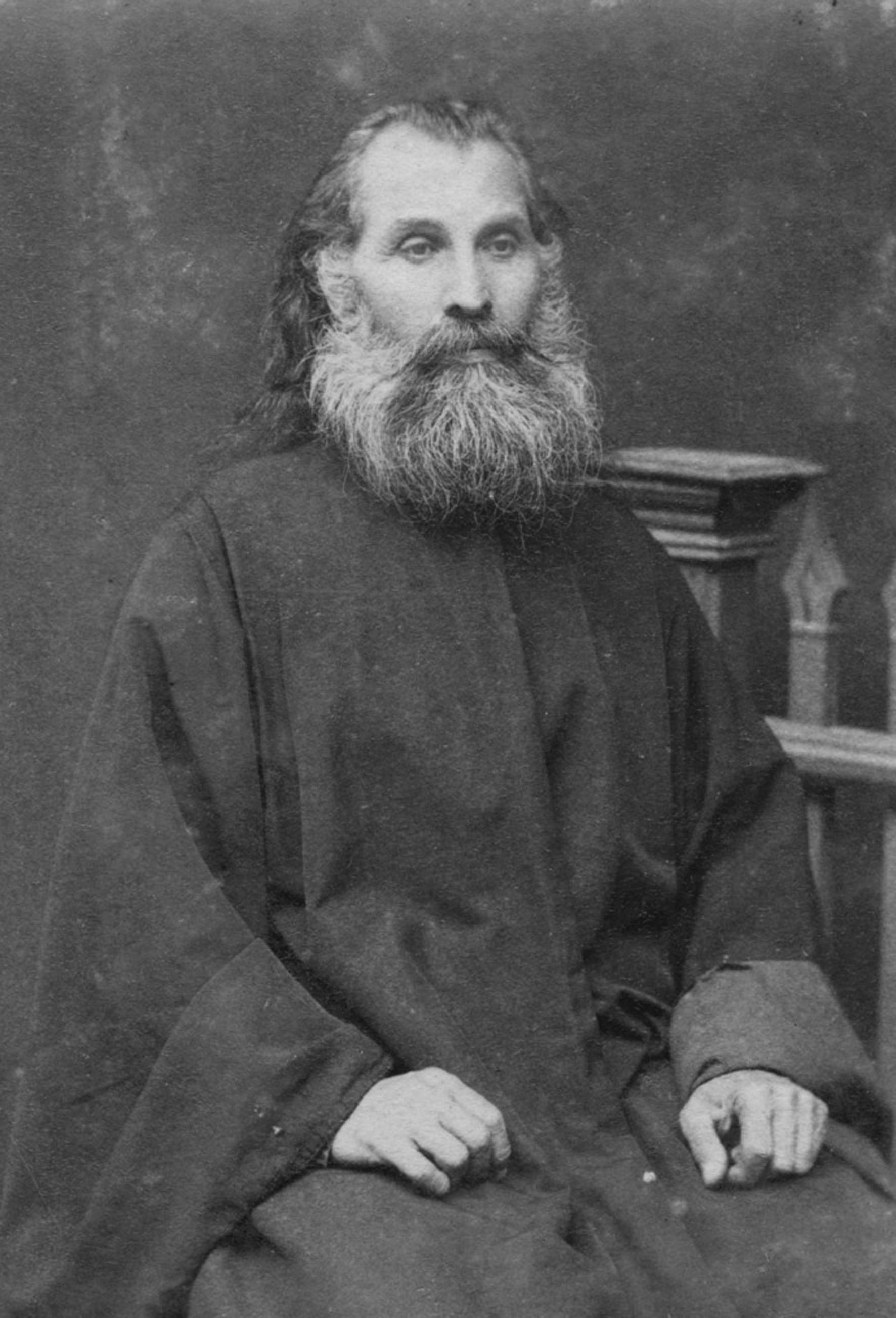
Aristovle Kutateladze was a famous teacher, theauthor of many school textbooks, including ones on Georgian language and geography. In addition to public and pedagogic work, he also possessed deep knowledge of the old church chants. According to Pilimon Koridze, “The statesman, Mr. Aristo Kutateladze, knows old hymns by heart. He learned from the famous singer Simona Kuti in Khoni and transcribed 551 of them, which are full of melodic beauty.”[5]
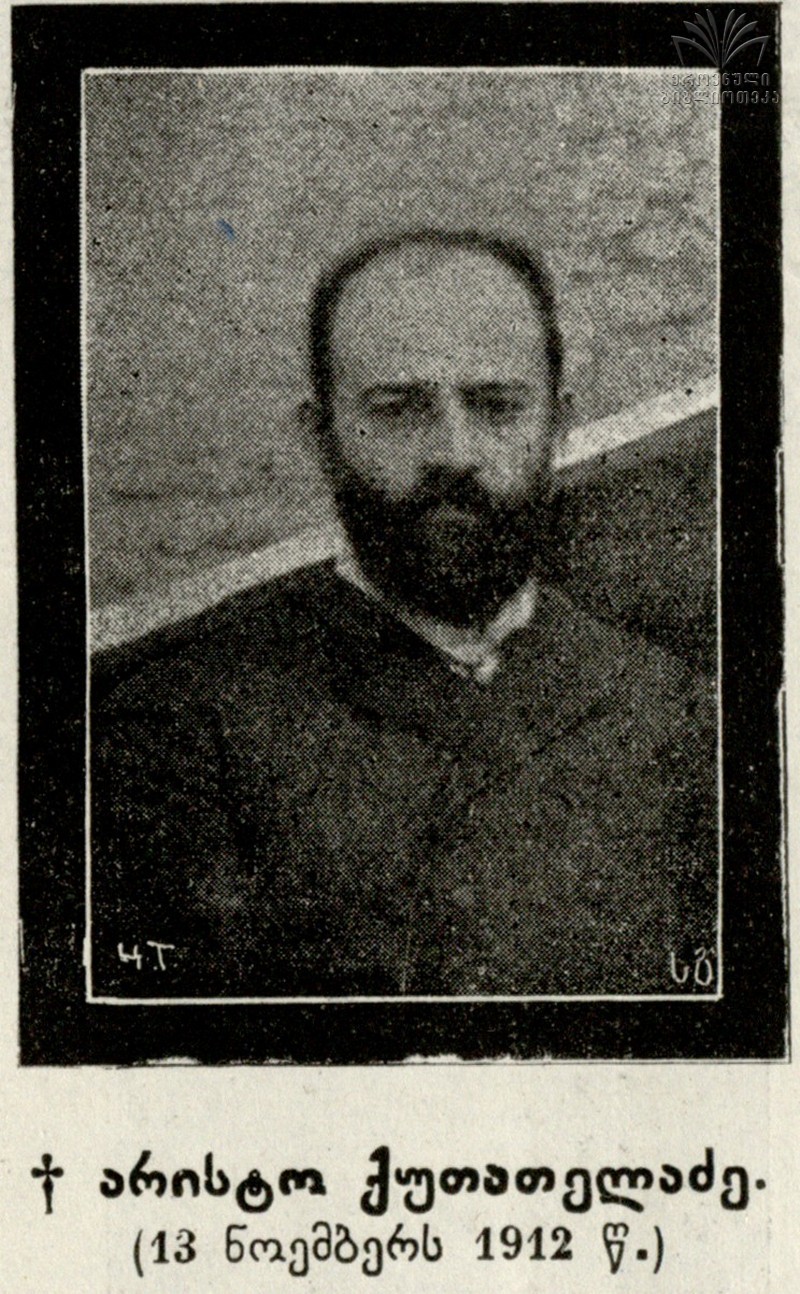
Up until 1844, Simona had a steady number of students, but after , the situation gradually became difficult for church officials, including chanters. Everything Georgian was in danger, including divine services and chanting in the Georgian language. Because of this, Simona turned to the Metropolitan of Imereti, Davit Tsereteli with a request for financial assistance. His request was granted a few years later: fifty rubles were allocated to him from the treasury every year. This assistance, however, was short-lived, and Simona Kuti spent the last years of his life in poverty.
Simona was the last head of the Khoni school. Soon after his death, the school ceased to exist. With his death in 1867, the district of Khoni, its nearby villages, and all of Kvemo Imereti in general lost the best local expert and leader in recitation and chanting.
Simon Kuti is buried in Khoni; unfortunately, the location of his grave is unknown to this day.
Further reading:
Vachridze, Petre. Khonis ist’oriidan (From the history of Khoni). Tbilisi: Parnavazi, 1998.
Epremidze, Tornike. Khonis ep’arkiis mtavarep’isk’op’osi ant’on chijavadze (Anton Chijavadze, archbishop of the Khoni diocese). Kutaisi: Tetnuldi, 2014.
[1]At that time there was a special institution inside the church for children with physical disabilities. Its establishment in Khoni is connected with the name of Anton Chijavadze, the last archbishop of Khoni, and Igumen Basil (Kutateladze).
[2] Kutaisi Central State Archive (kutaisi tsent’raluri sakhelmts’ipo arkivi, KTsSA), fond 21, sakm. 2299, 1844.
[3] L. Iverieli, “Kartuls galobazed” (On Georgian chant), Iveria, September 28, 1878 (no. 38), p. 8.
[4] “Reading the book” was a separate art involving the melodious delivery of liturgical texts with a special intonation to express its content.
[5] Pilimon Koridze, “Kartuli musik’a” (Georgian music), Mgzauri, October 9, 1905 (no. 37), p. 587.
Cover Photo - St. George's Church in Khoni
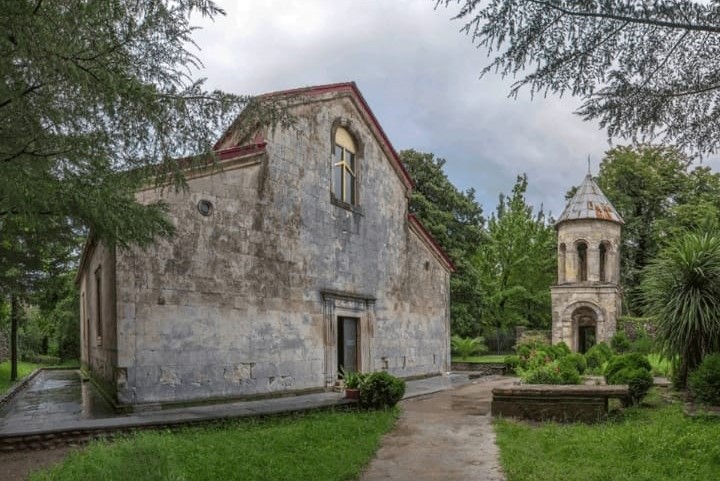

.jpg)
